Air force, air defence and electronic warfare in Second Karabakh War Analysis by Mammad Velimammadov
During Azerbaijan's military operation to liberate the occupied territories, the Armenian side was attacked by missile forces and artillery, air force and UAVs. A significant contribution to the victory of the Azerbaijani troops was made by the air defence and electronic warfare forces. Most researchers in their works on the Second Karabakh War (hereafter SKW) emphasise the use of UAVs and bomber ammunition (BAs). Little attention is paid to other types and types of forces. In this article, I will try to analyse the air force, air defence and EW of Azerbaijan and Armenia in the SKW.
Armenian air defence assets were based on assets of the antiaircraft missile brigade of the 19th Separate Army of Air Defence after the collapse of the Soviet Union. Later, in 1993-1996, Russia provided Armenia with a brigade set of old Krug-M surface-to-air missile systems with 27 self-propelled launchers, 40 Igla surface-to-air missiles, as well as relevant anti-aircraft guided missiles as military aid. In the late 2000s, Russia transferred a number of S-ZOOPT-1 and S-ZOOPS ADMS systems to Armenia. The object-based S-ZOOOPT-1s were the very first variants of the S-ZOOP system and had limited mobility, while their 5P854 launchers were towed.
Armenia's air defence was based on the S-ZOOPT-1 and S-ZOOPTS complexes: three S-ZOOPT-1 SAM positions were deployed around Yerevan, and S-ZOOPTS launchers were located in the south-east, near Karabakh. Also, there were firing positions of S-125M "Neva" short-range ADMS near Yerevan and Lake Sevan (Goycha - Ed.) . The Armenian ground forces were dominated by such obsolete air defense systems as Krug, Kub, Osa-AK/AKM, and Strela-YUM. By means of its own industry, Armenia has upgraded the Osa-AK ADMS system. Igla and Igla-S SAMs were quite advanced. The anti-aircraft artillery was represented by ZSU-23-4 "Shilka" self-propelled air defenсe systems, S-60 anti-aircraft guns and the towed/carried ZU-23-26.
In 2019, deliveries of the modern Russian Tor-M2KM short-range surface-to-air missile system, mounted on the KAMAZ-635017 chassis, began in Armenia. "Tor-M2KM is designed to protect critical military and government facilities, as well as ground troops in combat formation and on the march from missile and bomb attacks. The Tor-M2KM system differs from the tracked Tor-M2E version in that it can carry combat and equipment on any customer platform with appropriate payload capacity. The self-contained combat module (SCM) of the complex can be deployed permanently or mounted onto any customer's vehicle. The SCM is manned by a commander and an operator. The main armament of the autonomous combat module is two 9M334D missile modules comprising four 9M331D rocket launchers with an extended range of up to 15 km in each module.
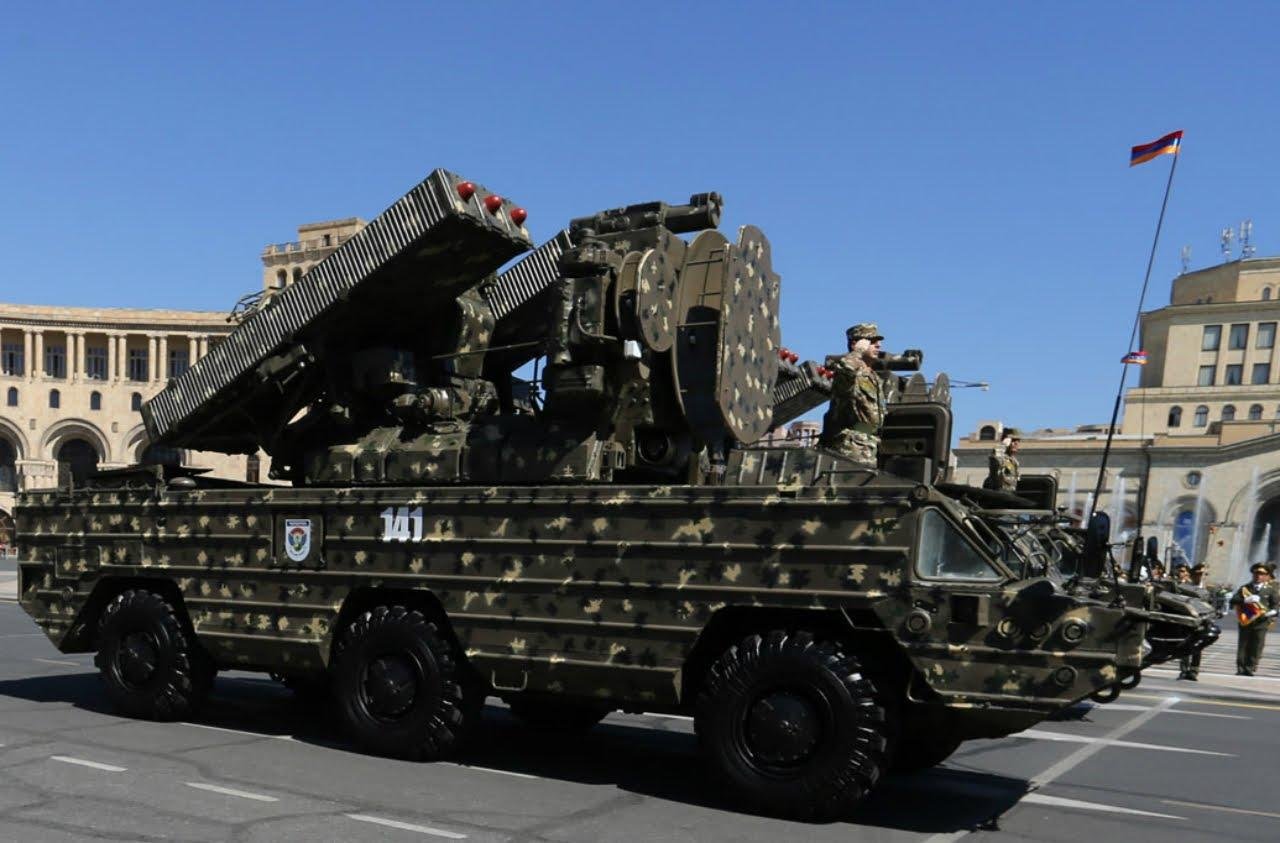
In 2020, Armenia struck a dubious deal to buy 35 Soviet-made Osa-AKM ADMS vehicles from the Jordanian army for a total of $27 million. Although Belarus, which had practical experience, had offered the Armenian military in 2012 to overhaul and modernize the Armenian Osas, Yerevan rejected such a deal. Russia also offered the Osa-AK missile defence systems to Armenia for free, but due to the need for their overhaul, this deal was not implemented either. As a result, eight years later, Yerevan bought the obsolete Jordanian Osas.
As for the Buk-M1-2 medium-range air defence system, the information is even more confusing. According to some reports, Russia offered these systems to Armenia after the start of the SKW, but they required repairs and reconstruction of their material parts before they could be used in combat. Former "NKR Security Council Secretary" Samvel Babayan stated on December 13, 2020 that only one of the six Buk-M1-2 TELARs handed over to Armenia was in working order when the war started, while the rest were awaiting the arrival of a repair team from Russia. There is also information that instead of the Tor-M2KM systems lost in combat, Armenia has urgently purchased some Tor-M1 combat vehicles from the Russian Armed Forces during the conflict, which are already obsolete and are being actively replaced with the advanced Tor-M2 ADMS system with increased ammunition and new 9M338D longer-range missiles. Nevertheless, belated efforts to supply the Armenian defences in Karabakh with at least some means of air defence have failed to challenge Azerbaijan's air superiority.
According to the Azerbaijani side, as of September 27, 2020, Armenia's air defence system in Nagorno Karabakh consisted of 24 "Osa-AK(M)" anti-aircraft missile systems, 6 "Tor-M2KM" missile systems, one S-300PS (this division is from the 99th anti-aircraft missile regiment of Armenian armed forces stationed in Gorus, deployed in the village of Shushakend before the war), two divisions of "Krug" ADMS, three divisions of "Kub" ADMS and one division of "S-125M" ADMS. According to Armenian information, Krug and S-125M ADMSs were actually decommissioned a few years before the start of the war and were used as decoys. As we can see the basis of the Armenian air defence was formed by "Osa-AM" complexes. Weaknesses of the complexes include rather low noise immunity which did not allow them to conduct effective combat operations under conditions of active and passive jamming, as well as relatively low spatial characteristics of the "Osa-AKM" ADMS system (range up to 10 km, height up to 5 km).
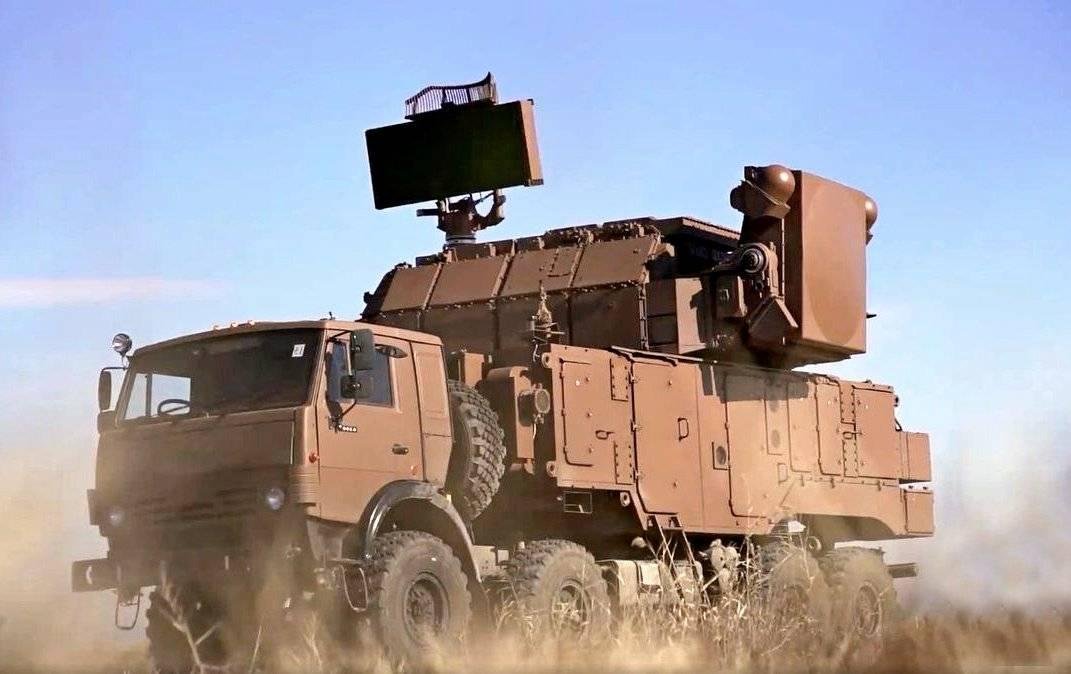
The only modern anti-aircraft system was the Tor-M2KM. According to Armenian records, only six self-propelled combat vehicles of the Russian complex were received prior to the war in wheeled versions, all of which were deployed in Karabakh. Thus only six Tor-M2KM combat vehicles covered a front of initially 280 km wide, which increased to 470 km after the Armenian defences were breached. The 9M331D surface-to-air missile has a range of up to 15km, which was insufficient to cover a frontline of this length. In the absence of external targeting and centralized air combat control, the Tor-M2KM had to operate autonomously, in scattered combat formation of small units. During the battle, four of the six Tor-M2KM combat vehicles were reportedly lost.
During the organization of the anti-aircraft defenсe in Nagorno-Karabakh, the Armenian command never established a unified system with centralized control, echeloned lines and defenсe areas. There was no continuous radar coverage, even at medium and high altitudes. In fact, air defence was reduced to the actions of small units and even individual combat vehicles.
In order to suppress the Armenian air defence system in Karabakh, the Azerbaijani Air Force command developed the 'Karabakh Box' operation. This operation consisted of the following parts:
1. In order to force the enemy to activate all its air defence systems, it was decided to organize a simulated massive air strike using aircraft, helicopters and UAVs. These aircraft carried out various manoeuvres without entering the air defence zone.
2. In order to prevent the enemy from revealing this plan, it was decided to launch An-2 aircraft into the air defence strike zone. The pilots would guide the AN-2s into the air defence strike zone and jump out of the aircraft with a parachute.
3. To make the An-2s look like real warplanes, they were stuffed with various bombs. If the enemy did not shoot down these planes, they would be used as kamikaze UAVs.
4. These decoys were meant to make the enemy waste expensive Tor-M2KM missiles that they had in limited numbers. This goal was achieved because for some time, due to the lack of missiles, the enemy could not use Tor-M2KM.
5. Further, Harop, Skystriker and Orbiter-1k bomber munitions, Bayraktar TB-2 UAVs, already in the air, struck the identified air defence assets.
6. In order to support the UAVs and hinder the actions of SAMs, they actively used electronic warfare equipment that interfered with the enemy's air defence systems.
7. Technical means were used to create false electronic targets for enemy SAM systems
8. Spike NLOS helicopter-mounted missiles with a range of up to 30 km were used to strike enemy air defence systems.
In the first hours of the military conflict, Baku managed to overwhelm the enemy's frontline air defences almost completely. The obsolete OsaAK/AKM and other Armenian air defence equipment in Karabakh proved unable to withstand the massive use of reconnaissance and strike UAVs in conjunction with long-range MLRS and barrage munitions systems. According to "Nagorno-Karabakh Security Council Secretary" Samvel Babayan, Armenia's air defence forces in Karabakh lost half of their means at the start of the hostilities. Other estimates suggest that Azerbaijani forces managed to destroy more than 60% of Armenia's air defences in Nagorny Karabakh in the first days.
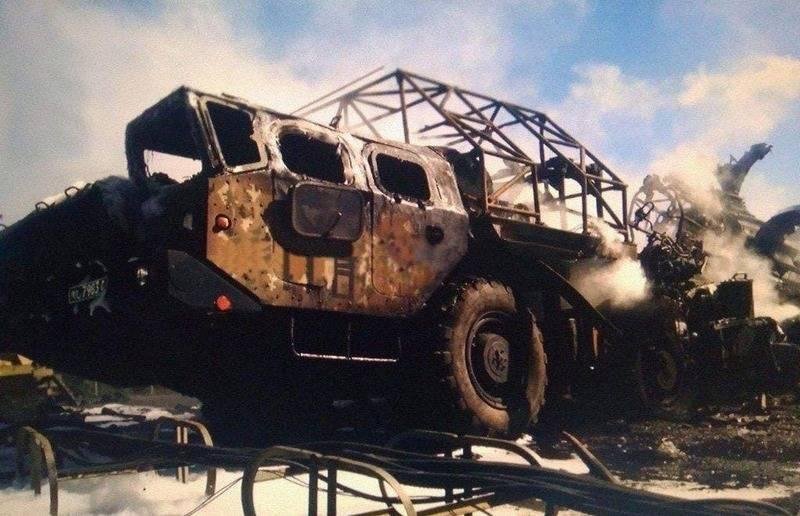
A study of Armenian air defence suppression tactics shows that Azerbaijani commanders used traditional enemy air defence (SEAD) suppression tactics. Groups were allocated to suppress enemy radar stations by means of jamming and/or defeat by airborne weapons. In addition, the strike teams were able to obtain aerial situational awareness information relative to the point of engagement.
To conduct electronic warfare more effectively its forces and means were used in conjunction with means of fire to disable and suppress command and control facilities, electronic systems and communication facilities, the guidance of air defence system weapons in the breakthrough zone, which precedes the first air and missile strike of the air offensive operation. Coordinated use of air forces and electronic warfare means was achieved by centralized setting of specific tasks in terms of depth, objects, frequencies and time of the suppression of radio-emitting means.
The main objective of the first air-to-air missile strike was to defeat air defences; to disrupt the enemy's air force and air defence command and control system in order to gain air superiority. In order to destroy the most important facilities of the enemy's air defence system and most important military command and control centers, UAVs were included in the strike echelon. Various tactical groups formed the basis of aviation's battle ranks. Several tactical groups of UAVs operating in designated areas of responsibility were created. One unit provided overall situational awareness and control of the group, operating at high altitudes (8-9 km). At altitudes of 6-7 km, reconnaissance-attack UAVs, repeaters, spotters, and electronic reconnaissance units operated. Barraging munitions operated at low and extremely low altitudes. The strike group included such a number of aircraft that provided the required degree of damage to a given object. The tactical groups were placed in the general order of battle in accordance with the assigned sequence of striking each target and achieving effective action by the support groups (reconnaissance, search and marking, suppression of air defenses, etc.).
The primary objective of suppressing enemy air defences was to suppress radar detection equipment, disrupt command and communications systems, disable air defence facilities, and defeat active air defence assets. The control of the strike groups in the course of the missile and air strike was carried out by the Air Combat Control Centers (ACCC) of the Azerbaijani Air Force.
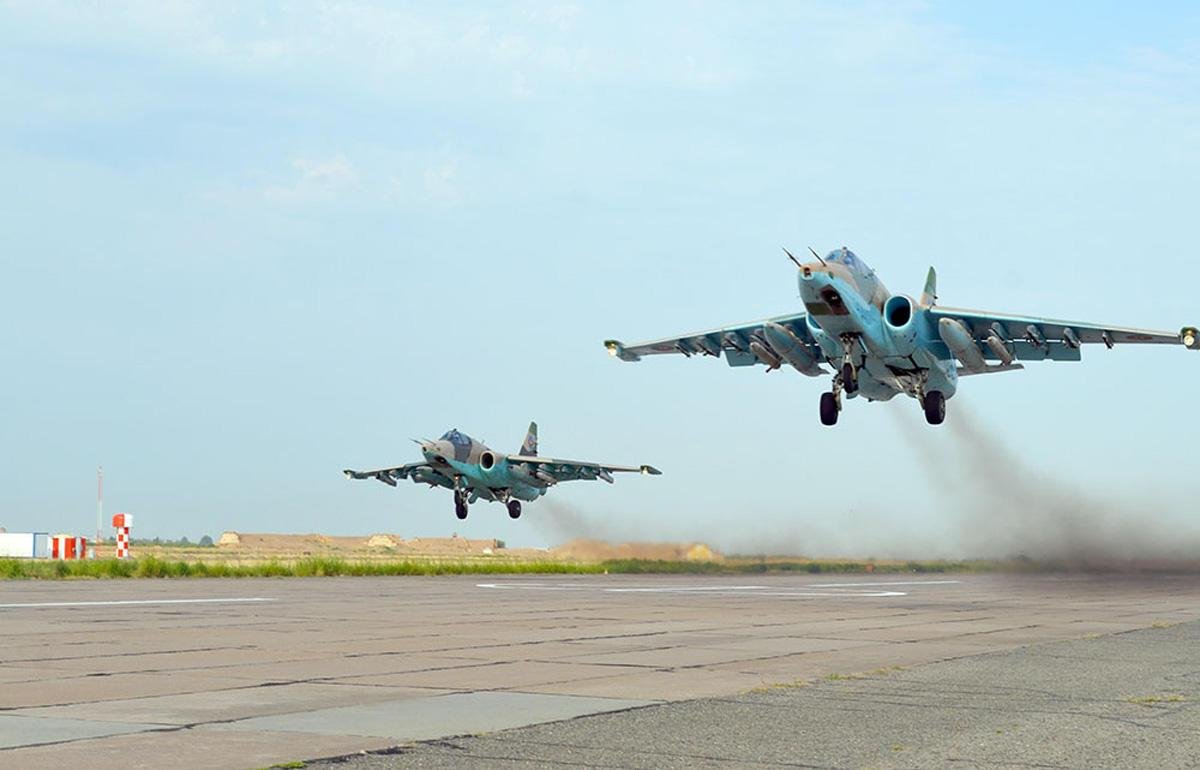
As a result, during the first day, with the strikes of UAVs, UB, army, and tactical aviation in the conditions of intensive use of electronic warfare, it was possible to suppress the Armenian air defense system, disrupt the management of its forces and means and practically gain air supremacy.
Of particular interest is the use of electronic warfare by the sides. Armenia acquired the Avtobaza-M electronic warfare system in 2017, which is a ground-based executive electronic reconnaissance system that is a component of a mobile electronic warfare system with high-power noise jamming stations SPN-2 and SPN-4. It follows from the tactical and technical specifications of Avtobaza-M that one complex could cover only one particularly important object in the Armenian army's defence system.
It is known for certain that the Armenian forces had unified radio jamming modules of the spatially distributed high-precision weapon system "Field-21E". Colonel General Movses Hakobyan, former chief of the General Staff of the Armenian Armed Forces, confirmed their existence at a press conference on November 19, 2020. He officially stated that Russia had handed over the "Field-21E" jamming stations to the Armenian side.
Among the electronic warfare systems destroyed by the Azerbaijani Army were one Russian electronic warfare complex Repellent-1 and a VHF radio communication jamming station R-330P Pyramida-1 from the Soviet radio-electronic warfare complex Mandat. "Repellent-1" is designed for electronic warfare against small reconnaissance unmanned aerial vehicles and their ground control points.
With the presence of electronic warfare systems in Azerbaijan, we can confidently talk about the Belarusian radio-electronic warfare station Groza-S, developed by KB Radar OJSC. Launched into service in the Azerbaijani Army in 2018, just two years after the start of serial production, R-934UM2 Groza-S, which is mounted on a self-propelled vehicle chassis, provides high-speed source detection, high accuracy of signal direction, digital jamming signal generation, positioning and jamming radio links with programmed operating frequency setting or simultaneously 16 radio links operating on fixed frequencies. It takes not more than 10 minutes to deploy the station after entering the position. The advantages of Groza-S include UAV detection within the station's range and tracking of UAV movement, a wide range of radio reconnaissance and suppression frequencies corresponding to all possible operating ranges of UAV equipment, detection and suppression of UAV control channels from the ground control station and data transmission channels from the UAV to the ground control station, effective suppression of UAV navigation, spoofing of navigation as well as taking the UAV off the planned route or forcing it to an emergency landing, short deployment time and low deployment time.
Azerbaijan also used the R-934UM2 "Groza-6" EW system, a Belarusian jamming and radio control communication station developed by KB Radar JSC. It is designed for search, detection and suppression of VHF band radio communication lines operating at fixed frequencies and in the modes of adaptive and programmatic rearrangement of the operating frequency. It consists of a transponder detector with an antenna-feeder system, two automated operator workstations, a ten-channel radio transmitter with seven transmitting ALS, a set of communication and data transmission equipment, a set of power supply and life support equipment, a car chassis with two power stations and a van body.
The Berezina ACS from Belarus and the IHASAVAR EW from Aselsan (Turkey) were also spotted in Azerbaijan's armament.
The EW troops of Azerbaijan carried out the following main tasks:
- revealing (detecting) the radio-electronic situation in the combat zone;
- radio-electronic suppression of the systems and means of command and control of troops, weapons, reconnaissance and electronic warfare of the Armed Forces of Armenia;
- radio-electronic suppression of Armenian airborne radar and radio-technical reconnaissance facilities identified;
- to detect and reveal the grouping of troops of Armenian armed forces, extensive use was made of radio and radio-technical reconnaissance facilities
- ensuring the radio-electronic protection and camouflage of Azerbaijani troops, conducting comprehensive technical monitoring of the state of protection of weapons, military equipment, and military facilities from the enemy's technical reconnaissance facilities and counteracting them, reducing the effectiveness of the enemy's use of radio-electronic suppression means;
- the purpose of the electronic warfare support was to provide information and intelligence support for decision-making, operations planning, and the command and control of troops (forces).
At the same time, the main efforts were focused on:
- detecting and revealing radio networks of operational and combat control of the enemy, conducting radio control of unclassified telephone and telegraphic radio communication lines. The main operational and combat radio networks of the enemy were uncovered by radio reconnaissance, which provided the Azerbaijani commanders with data on the combat composition and activities of the Armenian troops. This also made it possible to identify the location of enemy command posts and command staff. The identified coordinates were then used to launch missile strikes. Thus, commander of Armenian occupying forces in Karabakh, general Jalal Harutyunyan was attacked, as a result of which he was seriously wounded on October 27, 2020.
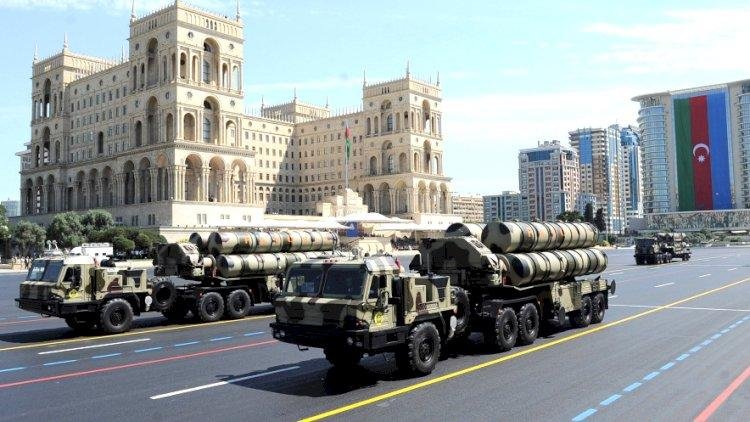
- radio-technical intelligence and electronic suppression of the Armenian air defence, with passive and active jamming to clarify the radio-electronic situation, the state of the communication and control system, and the deployment of radars for radar and air defence systems. As a result of this work, the combat capabilities of Armenian air defence systems were significantly reduced. All ADMSs were either completely suppressed or made unsuccessful attempts to target SAMs, which was recorded by the operation modes and signal parameters of SAM radars.
Overall, it should be noted that Azerbaijan's EW forces completely suppressed Armenia's EW means. The success of the Azerbaijani EW forces was due to the anticipation of the enemy using their control systems. By the beginning of the SKW, the EW units were at the highest level of combat readiness. The preparation of the Azerbaijani Armed Forces for the conduct of EW was carried out continuously both in peacetime and during combat operations, with the main directions in this preparation being: training of headquarters, EW control bodies, and EW units; battleground preparation; military and scientific training; and technical training.
In total, the established losses of Armenian air defence/EW in the Second Karabakh War amounted to:
- 26 SAMs (3 units. - 9K35 "Strela-10" 14 pcs. - "Osa" ("Osa-AKM") 2 pieces - 2K12 "Kub" 5 pieces - S-300PS 1 piece. PU S-300PS 1 unit. - Car from the complex S-300 1 unit. - Tor-M2KM),
- 12 radars (2 pcs. - P-18/M, 1 pcs. - P-15, 4 units. - 36D6 (for S-300), 1 unit. - SNR-125 (for S-125), 2 pcs - 5N63S (for S-300), 1 pcs - 19Zh6 (for S-300), 1 pcs - 19Kh. - 19Zh6 (for S-300), 1 pcs. - 1S32 (for 2K11 "Krug"), 1 pcs. - 1S91 (for 2K12 "Kub"),
- 2 EW/SRR systems (1 unit - R-330P "Piramida-1" 1 unit - Repellent-1).
Azerbaijan's air defence originally inherited the armament of the Baku Air Defence District. After the collapse of the Soviet Union, Azerbaijan inherited the property of the 97th Air Defence Division. At that time two radio-technical brigades were deployed in the territory of the republic in Alat and Mingachevir regions, 190th anti-aircraft missile regiment (HQ in Mingachevir town), 128th and 129th anti-aircraft missile brigades with headquarters in Zira and Sangachal settlements. These units were armed with long-range S-200V (four battalions), medium-range C-75M2/M3 systems (six battalions) and short-range C-125M/M1 (11 battalions). The last C-75 systems were withdrawn from the Azerbaijani Armed Forces only in 2016. According to media reports, the C-200V long-range complexes continue to be on combat duty due to modernization and repair with the help of Ukrainian specialists.
In 2010, Azerbaijan was the first post-Soviet country to make a major deal in the air defence market. Azerbaijan was the first of the post-Soviet republics to conclude the biggest deal in the air defence market, acquiring two divisions of S-ZOOPMU2 Favorit SAM systems from Russia for $300 million. During a military parade in Baku in 2013, not only the Favorit systems received from Russia were demonstrated, but also Belarus' upgraded S-125-2TM Pechora-2TM, Osa-lT and Buk-MB air defence systems. Azerbaijan gave preference to upgraded or deeply modernised Soviet SAM systems. In particular, the Belarusian Tetraedr company increased the capabilities of the S-125 complexes to the level of the Pechora-2TM, but they never became mobile. The army's Osa-AK SAM system has been partially upgraded to the Osa-IT guise, and two more batteries have been converted into T38 Stilet systems on the new MZKT-69222T24 wheeled chassis. The Buk-M1 medium-range complexes have also been upgraded by Belarusian specialists using Russian 9M317E25 guided missiles in the Buk-MB. The new systems have a larger kill zone and are capable of destroying a broader list of targets, including operational-tactical ballistic missiles. In 2012, Ukraine procured Kolchuga radio reconnaissance stations. The exact number of stations received is unknown. In 2019-2020, Ukraine upgraded the Kolchuga SRR.
In 2011, Azerbaijan was the first post-Soviet country to sign the largest contract worth $1.6 billion with Israel Aerospace Industries (IAI) to buy unmanned aerial vehicles and air and missile defence systems. Within the framework of this contract Azerbaijan received 1 Barak-8 (Barak-LR) air defence missile division with EL/M-2084 radar, 9 towed GMVLSs for 8 missiles each, a mobile control room, including about 40 Barak-8 and Barak-8ER missiles each. Other sources say the purchase of 75 missiles of both types. It also received 2 EL/M-2288 AD-STAR air traffic control and early warning radars for air defence. It has 2 versions, a fixed long-range EL/M-2288ER, and a mobile medium-range EL/M-2288MR. However, there is no information on which version was purchased by Azerbaijan. The EL/M-2106NG short-range air defence radar, the number of purchased units was not reported. EL/M-2084 MMR universal air defence radar. There are reports that Azerbaijan has purchased at least 4 such radars.
To sum up, before the Second Karabakh war, Azerbaijan's air defences were qualitatively and quantitatively superior to those of Armenia. During the war, Azerbaijan's air defences were mainly limited to repelling Armenian missile strikes against Azerbaijan. According to Azerbaijan, during the war 13 missiles 9K72 "Elbrus" and one missile 9K79 "Tochka-U" were fired at its territory. Armenian Elbrus SAMs hit the residential areas of Ganja. It caused no damage to infrastructure but lead to civilian casualties. Baku used S-ZOOPMU2 and Vuk-M2BM SAM systems as missile defences. The Azerbaijani MoD claims to have intercepted several missiles, for example, an Elbrus missile launched at Mingachevir on October 9 using the S-300 system.
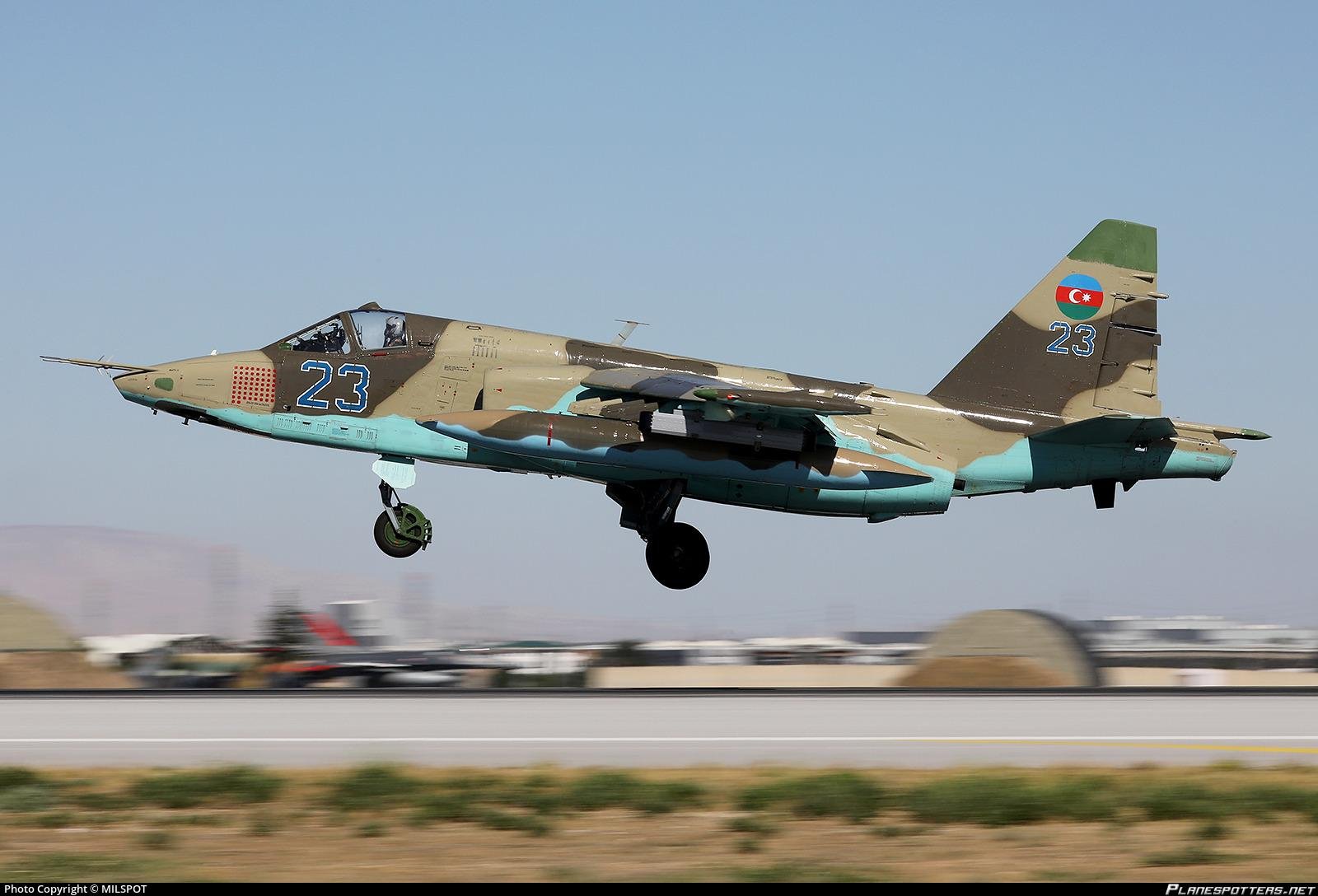
As a result of the collapse of the Soviet Union, the Azerbaijani Air Force inherited many combat aircraft. Initially, the fleet consisted of MiG-25 and MiG-21 fighters, Su-25 attack aircraft and Su-24 frontline bombers. Gradually, all MiG-25s were decommissioned.
In 2006-2011, 13 MiG-29 (modifications 9-13) and 3 MiG-29UB were purchased in Ukraine. All the aircraft were built in 1987-1988. Prior to shipment to the customer, the aircraft had to be overhauled and upgraded at Lviv State Aircraft Repair Plant (LGARZ). The MiG-29 upgrade program for the Azerbaijani Air Force was developed and carried out by Ukrainian enterprises, in addition to LHARZ, also including the State Enterprise "Orizon-Navigation" (Smela, Cherkasy region), CJSC "Fazotron-Ukraine" (Kyiv) and some others. The first of them supplied the Azerbaijani MiGs with satellite navigation equipment, and the second one upgraded the standard airborne radar H019 and modernized the weapons management system. It is not excluded that the Kyiv factory "Arsenal" (in the improvement of the optical-electronic sighting system, NSS, and so on), Kyiv SJSHC "Artem" (guided missile weapons "air-to-air"), and others were also involved in the work with the Azerbaijani planes. In addition, according to some reports, the Azerbaijani MiG-29 was capable of using high-precision air-to-surface weapons - Kh-29T guided missiles with TV-homing heads. Production of such GPS was also carried out in Ukraine - Concern "Elektron" from Lviv and the idea of X-29T adaptation for Ukrainian MiG-29 had been worked out by LHARZ, Concern "Elektron" and Arsenal plant back in 2002.
For the MiG-29UB fighters purchased in Ukraine in 2006-2008, Azerbaijan additionally purchased the "Sokol-KTS" flight simulator produced by Lviv "MARKET-MATS" LLC, a training class, 95 "air-to-air" guided missiles R-27 produced by "Artem", aircraft munitions, and then various ground equipment and spare parts.
In 2018-2019 in Ukraine, at the facilities of SE "Lutsk Motor Plant" and SE "Lviv State Aircraft Repair Plant" the repair of MiG-29 fighters of the Azerbaijani Air Force was performed. Besides, "Odessa Aircraft Plant" State Enterprise carried out the repair of KSA-3 aircraft aggregate boxes, as well as supplied with repaired SN-3307-01 PKAN.461513.032-01 instrument kits, H019-09F modernized radar targeting systems, component parts, parts, units, special component parts, units, aggregates of 9-13 (MiG-29 fighter).
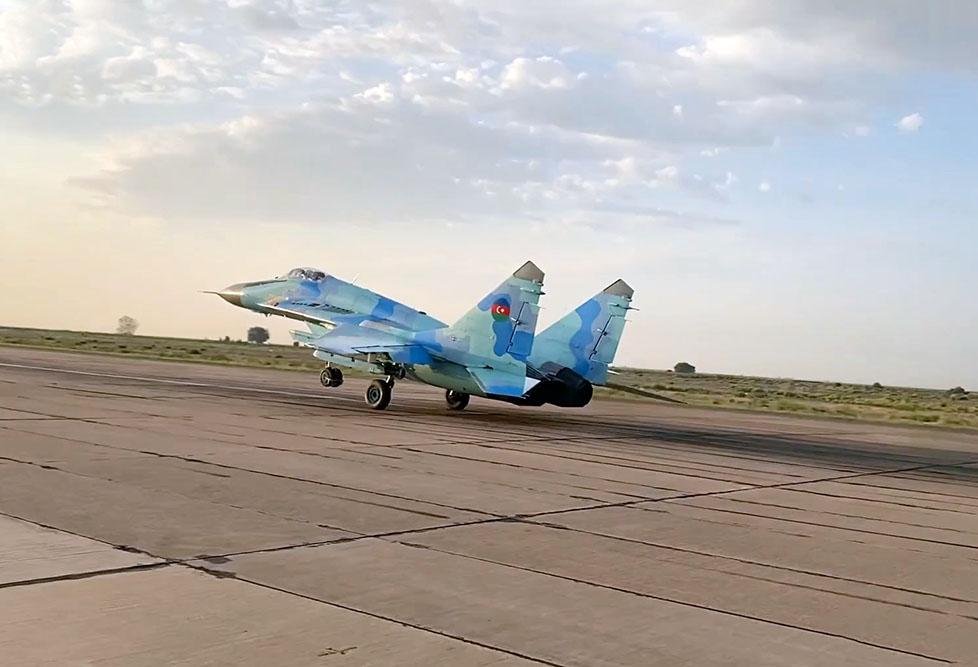
In 2008-10 Azerbaijan purchased 16 Su-25 attack aircrafts from Georgia, which, according to media reports, were upgraded by Israeli firm Elbit and received the ability to use day and night-guided weapons. Installation of a new sighting system and guided bombs, in fact, has changed the class of the Su-25 and the tactics of use - instead of strikes at low altitudes it has become possible to use the attack aircraft as a light high-altitude bomber.
All MiG-29s and Su-25s were equipped with the Talisman airborne defence system (manufactured in Belarus). The BKO Talisman is designed to provide protection for combat aircraft
- against all types of aviation and anti-aircraft guided missiles with active (semi-active) radar homing heads;
- against all types of aviation and antiaircraft missiles with optoelectronic (infra-red) homing heads;
- against ground-based air defence systems using anti-aircraft guided missiles with command and control systems.
The BKO "Talisman" also provides protection for the aircraft from "friendly fire" of aircraft interceptor missile systems and ground-based air defence systems.
In 2017-2018, Azerbaijan acquired the Roketsan SOM cruise missile, modification SOM-B1. This missile was demonstrated at the 2018 parade. The SOM (Satha Atılan Orta Menzilli Mühimmat, also an English-language acronym Stand Off Missile) cruise missile was developed by Turkish state-owned Roketsan in cooperation with state research centre TÜBİTAK SAGE. The SOM is a family of missiles with a Microturbo TRI 40 turbojet engine with a launch range of up to 250 kilometres, in several variants with different warheads. The basic SOM-A variant missile has an inertial guidance system and a 230-kg high-explosive warhead, while the SOM-B1 variant is additionally equipped with an infrared terminal-stage guidance system, with integrated two-way data transmission equipment. The SOM-B2 missile is similar in guidance system to the SOM-B1 but has a penetrating warhead that increases its total mass from 610kg to 660kg. The missiles are integrated into the armament of the Turkish Air Force's F-4E-2020 and F-16C/D aircraft.
In 2019, Türkiye's ASELSAN carried out the integration of the LGK laser guidance system with the Soviet-designed OFAB-250 high-explosive fragmentation bomb. The upgraded bomb is called FAB-250 LG. It is a conventional 250kg high-explosive fragmentation aerial bomb (FAB), with a guidance system installed in the nose, and control surfaces added in the nose and rear. With this fitting, the FAB adds 20 kg in weight, has a length of 3.3 m and a diameter of 0.325 m. At the same time, it is allowed to drop the bomb at a carrier velocity of up to 0.9 M (0.9 sonic) and flight altitude of up to 12 km, which allows its application in the zone of action of many short-range complexes without risk of striking the carrier ("Tor" of all modifications, "Osa", not to mention MANPADs). The guidance kit allows to reduce of the circumferential probable deviation up to 10 m.
A special stake has been made on attack helicopters. In 2010, contracts were signed for the delivery from Russia of 24 Mi-35M attack helicopters and 71 Mi-17-1B multi-purpose helicopters. Since 2014, the Mi-17 transport and combat helicopters have been armed with Israeli IAI LAHAT (SkyBow) anti-tank missiles with a laser semi-active guidance system. The helicopters carry two four-shot LAHAT launchers each and the MOSP-3000D electro-optical detection and guidance station. The LAHAT has a range of 13 km. Azerbaijan was the first known foreign customer for the LAHAT helicopter version (SkyBow). The Mi-17 helicopters were also equipped with Spike-NLOS air-to-surface guided missiles. The range of the Spike-NLOS guided missiles was 25 km. The application tactics were as follows: the drone issued target designation, and the helicopter engaged the target without entering the enemy's air defence zone.
In 2009-2010, 12 Mi-24 helicopters were upgraded to the Mi-24G version. The upgrade was carried out by the South African company Advanced Technologies and Engineering and the Konotop Aircraft Repair Plant Aviakon; the helicopters are equipped with the Barrier-V anti-tank missile system with semi-automated R-2V anti-tank guided missiles developed by the State Concern "Luch", and the Adron optronic suppression station KT-01AV developed by the Kyiv science and production company, which disrupts target acquisition and deflects all types of thermal missiles, including MANPADs (man-portable air defense systems). Earlier in late 2006, the Azerbaijani Air Force purchased 19 such stations for the combat helicopters already in service.
The Azerbaijani Air Force was heavily involved in air strikes against Armenian positions during the VCV, using both modernized FAB-250 LG bombs, as well as older, classic FAB-250 and FAB-500 bombs. The Su-25s were used to hit Armenian defence nodes in the main areas with 250-500 kg bombs. The Su-25s were used to engage targets on the front line so that the time spent in the Armenian air defence zone was minimal. The attack from high altitude by gliding bombs allowed not to fear infantry weapons, including MANPADs. But the Su-25 at high altitude is an easy target for air defence systems. The Armenian SAMs could hit the attack aircraft only when the radar was activated, and the Azerbaijani electronic reconnaissance system could detect the area where the radar was activated and warn its aircraft. UAVs/UBs were then dispatched there to destroy the SAMs.
During the Fuzuli-Jabrayil offensive, Azerbaijan made extensive use of UAVs and operational-tactical aviation to break the Armenian defence line. Su-25 attack aircrafts struck Armenian positions near the towns of Fuzuli and Jabrayil.
On November 9, Su-25s destroyed an Armenian Tor-2MKM surface-to-air missile system near Khojavand with a guided air bomb. Tor was detected by electronic reconnaissance from a working radar emission, a Harop drone was sent to the area of operation, which detected the target and hit it when the vehicle went into cover. The Bayraktar then struck the hangar and finally the Su-25 flew in and finished it off with a heavy guided bomb.
The Mi-17 helicopters actively used LAHAT or SPIKE-NLOS guided missiles, receiving targeting from the UAVs and staying out of the air defence zone. The Mi-35 and Mi-24 provided fire support to advancing ground forces.
The Armenian Air Force and Air Defence Forces entered the war with a fleet of some 35 aircraft, the most notable of which were Su-30SM multi-role fighters and Su-25 attack aircraft. Only four Su-30SMs have been delivered relatively recently, and never used in combat operations. There were more Su-25s - about 12 at the start of the war. Ten Su-25s were purchased in 2004. Su-25s were purchased in Slovakia in 2004. However, these Su-25s were not modernized. The Armenian Air Force also had 11 Mi-24 attack helicopters, which were not modernized either. As a result, the main combat fleet of the Armenian Air Force was represented by outdated Su-25 and Mi-24 models.
Nominally, the most powerful combat aircraft in both countries' arsenals are Armenia's Su-30SM. However, since December 2019, the Air Force has received only four of these aircraft. The main type in the fleet of small combat aircraft remains the Su-25 attack aircraft. The Su-30SMs have apparently not been deployed during combat operations. Armenian Prime Minister Nikol Pashinyan told parliament that the weapons package for the aircraft had not been installed in time. However, satellite images of the Gyumri airfield from October 2020 show the Su-30SM parked (possibly armed), while other images show what looks like an Armenian aircraft carrying R-73 and R-27R air-to-air missiles. Most likely the Su-30 was not used by Armenia because of its low level of combat readiness.
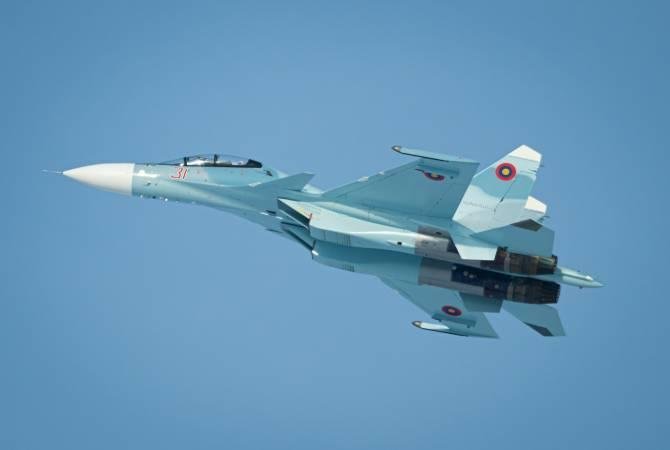
On September 29, Armenia lost the Su-25, and the Armenian Defence Ministry claimed it was shot down by a Turkish F-16. Azerbaijan and Türkiye immediately denied the information. Most probably the Azerbaijani MiG-29 was used in the battle. In fact, the Armenian Air Force never played a significant role in the SKW. The Su-30SM attack aircraft which it had bought with fanfare were left idle, and the use of Su-25s resulted in heavy losses among them.
To sum up, before the Second Karabakh War, Azerbaijani air defence, air force, and EW were quantitatively and qualitatively superior to Armenian. As a result Armenian air defence failed to protect the airspace over the occupied Azerbaijani territories, and the air defence system failed to create significant problems for the Azerbaijani Army. The Armenian Air Force, despite its Su-30SMs, was unable to provide effective support for its ground forces. This was due to deficiencies in the military-technical planning of the Armenian Armed Forces in terms of both quality and quantity. By conducting correct and accurate military-technical planning and procurement of armaments, Azerbaijan managed to achieve both qualitative and quantitative superiority over Armenia in air defence, air force, and EW, which had a significant effect on the course of the SKW.
The experience of the SKW demonstrates the importance of correct military-technical planning and arms procurement policy, combat training, and mastery of modern methods and techniques of warfare in achieving success in warfare.








